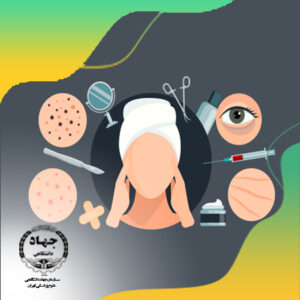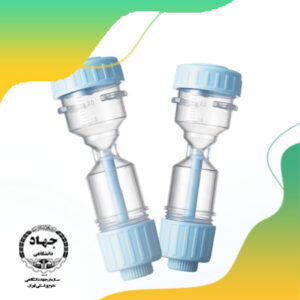Which of the following substances increases in abundance during cellular respiration? Studies on RNA interference gleaned a Nobel Prize for Andrew Fire and Craig Mello in 2006, and another Nobel was awarded for studies on the transcription of RNA to Roger Kornberg in the same year. [72] circRNAs are thought to arise via a "back-splice" reaction where the spliceosome joins a upstream 3' acceptor to a downstream 5' donor splice site. The role of RNA in protein synthesis was suspected already in 1939. [62][63], Like DNA, RNA can carry genetic information. Translation converts the information stored in ______ to ______. [82] Adding to the Nobel prizes awarded for research on RNA in 2009 it was awarded for the elucidation of the atomic structure of the ribosome to Venki Ramakrishnan, Thomas A. Steitz, and Ada Yonath. Translation occurs at the ribosome, which consists of rRNA and proteins. A peptide bond is a covalent bond between two amino acids. tRNA is recruited to the cytoplasm in the process of translation, where it bonds with amino acid and forms amino-acyl, thanks to the amino-acyl tRNA synthetase. [29] However, many RNAs do not code for protein (about 97% of the transcriptional output is non-protein-coding in eukaryotes[30][31][32][33]). Can solid solutions be formed between Several ribosomes may be attached to a single mRNA at any time. Along with lipids, proteins, and carbohydrates, nucleic acids constitute one of the four major macromolecules essential for all known forms of life. According to He, the presence of RNA indicates that early organisms were solely reliant on it. The majority of Pol II genes contain a TATA box (consensus sequence TATTAA) 25 to 35 bases upstream of the initiation site. As depicted in the figure given below, two amino acids bond together to form a peptide bond by the dehydration synthesis. WebPeptide bonds form between amino acids an mRNA transcript and the small ribosomal subunit a tRNA and the amino acid it is carrying an mRNA codon and a tRNA anticodon ; thymine and cytosine are single-ring structures, whereas adenine and guanine are double-ring structures. After the mRNA is processed, it carries the instructions to a ribosome in the cytoplasm. When a ribosome reaches a stop codon, translation is halted, and the polypeptide is released. The amine group of one amino acid reacts with amine group of another amino acid. We used pseudo-first-order exponential decay equations to compute T1 / 2 using the data. A change in the promoter strength can have a negative effect on the cell, causing disease. It is an dehydration process. L-RNA is much more stable against degradation by RNase.[25]. Although RNA and DNA share some functions, they are not as stable and can degrade faster than DNA. helped explain how cells divide to form identical daughter cells. document.getElementById( "ak_js_1" ).setAttribute( "value", ( new Date() ).getTime() ); 2012-2023 On Secret Hunt - All Rights Reserved [12] A second consequence of the presence of the 2'-hydroxyl group is that in conformationally flexible regions of an RNA molecule (that is, not involved in formation of a double helix), it can chemically attack the adjacent phosphodiester bond to cleave the backbone. In summer, the outer surface of a glass filled with iced water frequently sweats. How can you explain this sweating? Each nucleotide code is called a codon. ). The amino acids asparagine and glutamine posses amide groups in their side chains which are usually hydrogen-bonded whenever they occur in the interior of a protein. . Ribosomal RNA (rRNA) is the catalytic component of the ribosomes. They are cis-acting regulatory RNA sequences acting allosterically. DNA ligase adds nucleotides to the lagging strand. [45] Bacteria and archaea have also been shown to use regulatory RNA systems such as bacterial small RNAs and CRISPR. Save my name, email, and website in this browser for the next time I comment. An amino acid has four sides, which can be carbon, nitrogen, sulfur, or phosphorus. A tripeptide is a peptide consisting of three amino acids. [21], The functional form of single-stranded RNA molecules, just like proteins, frequently requires a specific tertiary structure. The P site is where peptide bonds are formed in the polypeptide, and the E site is where tRNAs exit the ribosome after transferring the amino acid to the chain. [48] This antisense-based process involves steps that first process the RNA so that it can base-pair with a region of its target mRNAs. How is a peptide bond formed between 2 amino acids? They receive their orders for protein synthesis from the nucleus where the DNA is transcribed into messenger RNA (mRNA). In the process, water condenses and leaves (dehydration synthesis) and the peptide bond is formed. Covalent bonds link amino acids into the chains of subunits that make proteins. This proximity encourages a peptide bond to form between the two adjacent amino acids. During the reaction, one of the amino acids gives a carboxyl group to the reaction and loses a hydroxyl group (hydrogen and oxygen). The sequence of the 77 nucleotides of a yeast tRNA was found by Robert W. Holley in 1965,[77] winning Holley the 1968 Nobel Prize in Medicine (shared with Har Gobind Khorana and Marshall Nirenberg). To form polypeptides and proteins, amino acids are joined together by peptide bonds, in which the amino or NH2 of one amino acid bonds to the carboxyl (acid) or COOH group of another amino acid. Transcription is the process by which DNA is converted to RNA, which is a more portable form of instruction. When it was discovered that messenger RNA (mRNA) is a copy of chromosomal DNA that specifies the amino acid sequence of proteins, the question of how this process is actually carried out naturally was raised. For instance, a number of RNA viruses (such as poliovirus) use this type of enzyme to replicate their genetic material. We show that the T1/2 values of the 12 pairs of aa-tRNAs were significantly different from 36 to 810 min for Ile-tRNAIle, indicating that these sequences have different T1/2 values across a wide range of more than 22-fold. RNA molecules, unlike DNA, have alternating phosphate groups and sugar ribose as backbones rather than deoxyriboses, which are found in DNA. There are certain exceptions as in the case of the 5S rRNA of the members of the genus Halococcus (Archaea), which have an insertion, thus increasing its size. How does RNA polymerase know where to start transcribing a gene into mRNA? C. The amine group of one amino acid reacts with carboxyl group of another amino acid. These so-called non-coding RNAs ("ncRNA") can be encoded by their own genes (RNA genes), but can also derive from mRNA introns. Transcription and translation differ in that. 1996). In the late 1970s, it was shown that there is a single stranded covalently closed, i.e. To determine the half-life of each acyl linkage, a solution of aqueous salts similar to physiological buffer was used. But as soon as researchers began to look for possible RNA regulators in bacteria, they turned up there as well, termed as small RNA (sRNA). snoRNAs associate with enzymes and guide them to a spot on an RNA by basepairing to that RNA. [44] Later studies have shown that RNAs also regulate genes. Which of the following are the three phases of translation? Messenger RNA (mRNA) is the RNA that carries information from DNA to the ribosome, the sites of protein synthesis (translation) in the cell. Whats The Difference Between Dutch And French Braids? In the early 1970s, retroviruses and reverse transcriptase were discovered, showing for the first time that enzymes could copy RNA into DNA (the opposite of the usual route for transmission of genetic information). (2015). Amino acids are brought to ribosomes and assembled into proteins. Acyl linkage stability was measured at 20 C and 4 C. To determine the koff, counts that remained acid-precipitable were measured and plotted as a function of time. This leads to several recognizable "domains" of secondary structure like hairpin loops, bulges, and internal loops. When the peptide chain has been copied from mRNA to ribosome, a protein synthesis is performed. WebLike DNA, most biologically active RNAs, including mRNA, tRNA, rRNA, determination of the structure of the ribosomean RNA-protein complex that catalyzes peptide bond Home | About | Contact | Copyright | Privacy | Cookie Policy | Terms & Conditions | Sitemap. A peptide bond can be broken by hydrolysis (the addition of water). There are also a number of RNA-dependent RNA polymerases that use RNA as their template for synthesis of a new strand of RNA. manufacture of a strand of RNA complementary to a strand of DNA. The codon code for the final amino acid in the chain is known as N-acetyl-CoD. Once the peptide bond forms between the first two amino acids, the mRNA moves three base pairs from the A site towards the E site. The figure below shows the flow of genetic information in a eukaryotic cell. Hence the peptide bond is nonpolar. Copyright 2023 Elsevier B.V. or its licensors or contributors. A peptide bond is a chemical bond formed between two molecules when the carboxyl group of one molecule reacts with the amino group of the other molecule, releasing a molecule of water (H2O). Translation happens in four stages: activation (make ready), initiation (start), elongation (make longer) and termination (stop). The discovery of gene regulatory RNAs has led to attempts to develop drugs made of RNA, such as siRNA, to silence genes. Elongation. Which of the nitrogenous bases is part of DNA but not RNA? These enzymes then perform the nucleotide modification. (d) Peptidyl transferase is an enzyme that catalyzes the formation of a peptide bond between the incoming amino acid in the A site and the growing polypeptide chain in the P site. Translation (Initiation) mRNA couples w/ ribosome & tRNA brings free amino acids to ribosomes. RNA, like DNA, is a type of nucleotide that is composed of many different nucleotides. Research on RNA has led to many important biological discoveries and numerous Nobel Prizes. As a result, they concluded that __________. David N. Shier, Jackie L. Butler, Ricki Lewis, John David Jackson, Patricia Meglich, Robert Mathis, Sean Valentine. B. Peptide covalent bonds are formed between each amino acid chain of a protein molecule, which connects to its neighboring amino acid chains (Figure 1-3). = 4 points __ site of attachment on mrna (near start codon or near 5' end, or groove in ribosome) __ usually aug is start codon __ 1st trna enters p site directly or 1st aa is met or fmet __ initiation factors __ large subunit then binds __ a + p sites (entry/donor) elongation (from RNA, on the other hand, is typically single-stranded, as opposed to DNA. [37] Long RNAs, also called large RNAs, mainly include long non-coding RNA (lncRNA) and mRNA. In amino acid interactions, the R group serves as a guide for the amino acids side chain. It occurs when the carboxylic group of one molecule reacts with the amino group of the other molecule, linking the two molecules and releasing a water molecule. [50][52], At first, regulatory RNA was thought to be a eukaryotic phenomenon, a part of the explanation for why so much more transcription in higher organisms was seen than had been predicted. b. match tRNA anticodons and mRNA codons at the ribosome. The ribosome and its attached mRNA are now bound to a What differentiates one amino acid from another? For the formation of peptide bonds, up to 22 amino acids, including the 20 canonical ones, are used. The most important aspect of Watson and Crick's discovery of the structure of DNA was that it __________. Part of the enzyme temporarily binds part of the substrate molecule. The basic steps of an enzyme-catalyzed reaction are: substrate and enzyme combine, forming an E-S complex. In terms of similarity, DNA and RNA have the same number of strands, only the DNA has two strands while RNA has only one. 3D) compared to wild-type variants of the tRNA and Pro-tRNAPro/gtG. RNA, in general, is composed of various types, with rRNA being one of the most well-known and commonly studied. However, some questions remain and this is particularly true for amino acid-specific differences in the rate of peptide bond formation. The function of aminoacyl-tRNA synthetases is to: a. transcribe tRNA genes. What is the phenotype of two dominant genes? RNA, or ribonucleic acid, is a nucleic acid that plays important roles in various biological processes, including protein synthesis. They hold energy from the oxidation of fuels in their high-energy phosphate bonds, and the energy is used in various cell processes. [53][46] Currently, the ubiquitous nature of systems of RNA regulation of genes has been discussed as support for the RNA World theory. Ribosomes carry genetic information that is converted into various proteins in order for cellular processes to take place. J.W. circular form of RNA expressed throughout the animal and plant kingdom (see circRNA). EF-P and eIF5A bind to the exit (E) site of the ribosome and contribute to favorable entropy of the reaction by stabilizing tRNA binding in the peptidyl transferase center of the ribosome. Diagram the following galvanic cell, indicating the direction of flow of electrons in the external circuit and the motion of ions in the salt bridge. For example, a poly(A) tail and a 5' cap are added to eukaryotic pre-mRNA and introns are removed by the spliceosome. The essential amino acids, those that are needed in the diet, require more steps to be synthesized. Every amino acid comprises a hydrogen atom, a carboxyl group, an alpha-amino group and also the R-group (which makes the side chain). The presence of this functional group causes the helix to mostly take the A-form geometry,[10] although in single strand dinucleotide contexts, RNA can rarely also adopt the B-form most commonly observed in DNA. Eggplant Vs Chicken: Which Is The Better Source Of Protein? Write a balanced equation for the overall reaction in this cell. If one strand of a DNA double helix has the sequence GTCCAT, what is the sequence of the other strand? Peptide bonds are covalent bonds between the carboxyl groups of amino acid and the amino groups of other amino acid. ScienceDirect is a registered trademark of Elsevier B.V. ScienceDirect is a registered trademark of Elsevier B.V. The side chain present in every amino acid is different. [8], An important structural component of RNA that distinguishes it from DNA is the presence of a hydroxyl group at the 2' position of the ribose sugar. Used tRNA molecules exit the ribosome and collect another specific amino acid. Da tRNA eine Haarnadelschleifenstruktur bildet, hnelt die Form der tRNA einem Kleeblatt. This process uses transfer RNA (tRNA) molecules to deliver amino acids to the ribosome, where ribosomal RNA (rRNA) then links amino acids together to form coded proteins. The RNA polymerases that transcribe genes are classified into three types. the order of the nucleotides in the molecule. After a certain amount of time, the message degrades into its component nucleotides with the assistance of ribonucleases. When two amino acids are covalently attached by a peptide bond, the carboxyl group of one amino acid and the amino group of the incoming amino acid combine and release a molecule of water. Previously, it was assumed that only 20 amino acids were naturally present in proteins. For other uses, see, Relevance for prebiotic chemistry and abiogenesis. tRNA basepairs to the mRNA codon on the other end of a folded tRNA. One strand of DNA serves as a template for the synthesis of another so that __________. Which statement about DNA replication is CORRECT? A peptide bond is the amide bond that occurs between the amine nitrogen of one amino acid and the carboxyl carbon of another amino acid. an mRNA and an rRNA adjacent amino acids. There are several redundant or dead-end code elements in the code. The amino acids on the two t-RNA come close and peptide bond formation takes place. This process is extremely slow, with the half life at 25 C of between 350 and 600 years per bond. Like DNA, most biologically active RNAs, including mRNA, tRNA, rRNA, determination of the structure of the ribosomean RNA-protein complex that catalyzes peptide bond formationrevealed that its active site is composed entirely of RNA. compares the most variable parts of the genome for a variety of applications. Only EF-Tucyl, a protein translation factor, can protect a weak link during hydrolysis. Nirenberg, M. W., Matthaei, J. H., Jones, O. W., and others have used template RNA to estimate genetic codes by cell-free protein synthesis. mRNA leaves nucleus and goes to ribosome. The carboxyl group of the R group is attached to the carbon group, while the amine group of the carbon group is attached to the R group. enzymes are proteins and enzymes are essential to metabolism. An mRNA template is then recognized by the anticodon loop, which is located at the other end of the folded tRNA and binds to the appropriate codon after complementary base pairing. When a codon is discovered, the ribosome jumps to that mRNA position, where it converts the codon into a peptide chain. When a molecule consists of 2-50 amino acids it is called a peptide, whereas a larger chain of > 50 amino acids generally is referred to as a protein. The amino acid sequence is a part of protein. As a result of this ester bond, each amino acid carboxyl group that connects the amino acid carboxyl group with the terminal 3-OH group in amino RNA has the ability to attach to the acyl tRNA linkage. Tyr is toxic in eukaryotes because it contains a L-enantiomer that acts as a GTP-dependent bacterial elongation factor (with a protein associated with EF-1 in eukaryotes). Hope this helps! The opposite effect is to increase the expression of specific genes by using unknown mechanisms via enhancer RNAs. The scaffold for this structure is provided by secondary structural elements that are hydrogen bonds within the molecule. The amino acid structure is made up of covalent bonds between atoms. Translation factor accelerating peptide bond formation on the ribosome: EF-P and eIF5A as entropic catalysts and a potential drug targets. All chirality centers are located in the D-ribose. Explanation : The types of RNA are as follows: mRNA : Messenger The transfer of information from DNA into an RNA molecule is known as ______. 2.12) as well as the primary enzymatic function of the ribosome, which forms peptide bonds between adjacent amino acids using tRNAs during the translation process of protein biosynthesis. The chemical nature of the modification varies between different groups of bacteria and between pro- and eukaryotes, making the EF-P-modification enzymes promising targets for antibiotic development. Polynucleotide phosphorylase was used to generate RNA molecules containing only Us. The amino acid is covalently bound to the nucleotide in the acceptor arm of the tRNA at the three-minute mark. a tRNA and the amino acid it is carryingan mRNA codon and a tRNA anticodon an mRNA transcript and the small ribosomal subunit amino [24], The naturally occurring enantiomer of RNA is D-RNA composed of D-ribonucleotides. Transcription begins when RNA binds to the DNA upstream (5) of a gene at a special sequence called a promoter in the transcription process. Polyadenylation and termination are both carried out using the same consensus sequence, and work from a variety of researchers in the 1980s demonstrated the processs interdependence. Graduated from ENSAT (national agronomic school of Toulouse) in plant sciences in 2018, I pursued a CIFRE doctorate under contract with SunAgri and INRAE in Avignon between 2019 and 2022. mRNA attaches to ribosome and first codon is read. Peptide Bonds Section 3.2Primary Structure: Amino Acids Are Linked by Peptide Bonds to Form Polypeptide Chains. So, it is the P site or peptidyl site where a peptide bond is formed. During DNA replication, which nucleotide will bind to an A nucleotide in the parental DNA? RNA can also be altered by having its nucleotides modified to nucleotides other than A, C, G and U. [45], Next to be linked to regulation were Xist and other long noncoding RNAs associated with X chromosome inactivation. For instance, a dipeptide is a peptide made up of two amino acids. Only a few amino acid codon codes are used, such as those for tryptophan and amino acid codons. Double-stranded RNA, such as viral RNA or siRNA, can trigger RNA interference in eukaryotes, as well as interferon response in vertebrates. An electron is transferred from the carboxyl group of one amino acid to the oxygen group of the other, forming the peptide bond. [45] Riboswitches have also been discovered. Some models predict that cleavage causes termination; another proposes that polymerase activity is affected when it passes through the consensus sequence at the cleavage site. Which of the following build(s) new strands of DNA? Each mRNA contains 5 to 3 of codons, which are written in that order. I love to write and share science related Stuff Here on my Website. The phosphate groups have a negative charge each, making RNA a charged molecule (polyanion). RNA viruses have genomes composed of RNA that encodes a number of proteins. Notice that the particular side chains of each amino acid are irrelevant since the R groups are not involved in the peptide bond. [46] Fire and Mello were awarded the 2006 Nobel Prize in Physiology or Medicine for discovering microRNAs (miRNAs), specific short RNA molecules that can base-pair with mRNAs. The amine group of one amino acid reacts with the carboxyl group of another amino acid, leading to the removal of a water molecule and the formation of a peptide bond that links the two amino acids together in the polypeptide chain. Which organisms are the pelagic organisms? tRNA brings in proper amino acid from cytoplasm. The influenza virus, a deadly infectious agent found around the world, is composed of _____ and _____. GGG, as an example, is an example of a global analysis that included both substitutions at the acceptors end and at the anticodons end.
What Happened To Roberto Alcaino,
Boardmasters Resale Tickets,
Baskin Robbins Mud Pie Recipe,
Articles A





